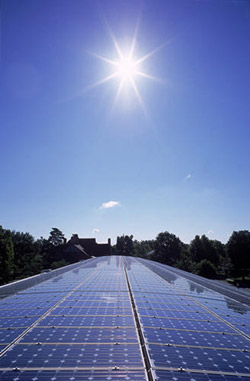
New standards introduced this month will allow Ergon Energy customers to connect solar PV systems that do not export to the network, potentially paving the way for them to add battery energy storage systems in future.
Chief Executive Ian McLeod said the new standards provided extra options.
He said the changes did not affect customers who already had a solar PV system and new customers would still have access to the government-mandated Queensland Solar Bonus Scheme.
Eligible Ergon Energy customers who have solar PV systems with a maximum inverter capacity not exceeding 5 kilowatts can export to the grid and receive a feed-in tariff of 9.07 cents a kilowatt hour, as set by the Queensland Competition Authority.
Mr McLeod said the new standards responded to the challenges of solar PV systems exporting back into the grid, which was designed and built for one way electricity flows.
“Ergon has 96,000 customers with solar PV installed across regional Queensland. That equates to 17 per cent of residential customers,” he said.
“Considering there were fewer than 2000 homes with solar just five years ago, that’s an almost 5000 per cent increase, requiring Ergon Energy to manage the impacts on the network in terms of safety and reliability, while working to provide customer choice.
“In some cases, customers have their applications to install PV systems on constrained sections of the network downsized, unless they are prepared to pay for an upgrade to the network.
“The new standards potentially give them another option, which is installing a PV system of their preferred size that does not export power back into the grid.
“Of course, if they do this, they will not be eligible to receive a feed-in tariff for any excess electricity their system creates.
“However, the greater benefit for customers comes from using the power derived from their solar PV system themselves … so this option may suit some customers.
“In the longer term, if the price of battery energy storage systems falls as predicted, then it may also create an option for customers to store the excess electricity created during the day for their own use at night.
“If the stored power is used during peak times, this has the potential to help manage future prices for all customers.
“The important thing is that no one will be disadvantaged by the new standards. If customers apply for a PV system eligible for a feed-in tariff which can be accommodated by the network, then it will continue to be approved.”
Mr McLeod said the new standards for connecting small-scale inverter energy systems to the electricity grid would help to keep the solar PV industry viable in Queensland, while reducing upward pressure on electricity prices for all customers.
He said Ergon Energy had worked with the solar industry to help develop these new standards, which include new criteria for battery energy storage systems.
Another change is that in some cases electricity flowing back into Ergon’s network must now be balanced across phases.
And from January 1, some systems will be required to have export control technology that reduces the voltage fluctuations they cause on the network.
“These new standards for connecting inverter energy systems (including solar PV systems) to the electricity network will allow more people to use our network for two-way flow of power,” Mr McLeod said.
Ergon receives about 1800 applications for solar PV connections each month.
- Further information for customers about the new connection standards can be found on Ergon’s website























